Pieris japonica Portraits
An early stunner the Pieris shrubs are amongst my favourite Japanese inspired plants.
Pieris japonica or the lily of the valley bush is one of my springtime favourites.
The clusters of small, bell shaped flowers arrive at the same time as the young, new red leaves in April.
A favourite shrub this Pieris provides colour and scent from the flowers in winter. I spotted this at the beginning of December and expect the flowers to last until February. Eventually the blossom will be replaced with the famous bright red showy leaves that have rightly made the Pieris much sought after.
Tips and Hints for Great Pieris
- Pieris are happy in light shade. If you place them near paths you will get the scent from the drooping winter flowers early in the new year but allow space for the plant to grow. This years December blossom is very early for the north of England
- Pieris are ericaceous shrubs loving the same slightly acid soils preferred by Camellias, Rhododendrons and Azaleas.
- Prune or deadhead after flowering but take care not to remove new leaves which are a delight and the main reason for growing Pieris
- There are two main species the Pieris japonica and the Pieris Forrestii. I grow the Forest Flame and Katsura hybrid.
- Leaves start a bright strong red and mature to green making a startling sight.
- If the leaves tend to yellow and appear sickly it is because of alkaline soil and an ericaceous feed and a peat mulch would help.
- The shrub is slow growing but may reach 8 feet. However it is still useful under larger trees if it can get good moisture.
This bush is now over 6 feet tall growing in a spot sheltered from high winds.
They like ericaceous soil conditions but are not so fussy.
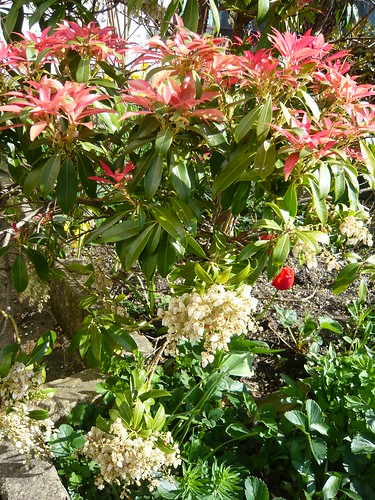
There are many varieties now available including the Katsura series from the home country of Japan.
Cultivation Tips
- Foliage is evergreen with leaves that emerge bronzed and eventually mature as dark green. They can suffer from chlorosis and poor health if grown in alkaline or neutral pH soils. This is due to iron/nitrogen deficiency causing the absence of green chlorophyll in the leaves.
- Young leaves may get burned by late spring frost.
- Useful in a Japanese garden
Selected Varieties
- Pieris Forest Flame is a cross with Wakehurst and formosa forestii to make a large shrub
- Pieris japonica Mountain Fire with fiery new foliage is a brilliant red instead of bronzed; perhaps the most common cultivar
- Pieris japonica Purity with early blooming, larger pure-white flowers on compact plants.
- Pieris japonica Red Mill emergent red leaves mature to dark green but are thick and leathery, white flowers last a week longer than
- normal, possesses a dense growth habit, and reportedly disease and pest resistant
- Pieris japonica Pygmaea a dwarf form
- Pieris japonica Variegata slow growing with young foliage emerging red, maturing to green with creamy-white leaf margins
- Pieris japonica Christmas Cheer a hardy form with bicoloured flowers.
- Pieris floribunda, formosa, lucida and taiwanenis are other species some times available.
When the red foliage starts to turn green you can take nodal cuttings. £-4″ long in gritty compost with some bottom heat will help these shrubs root.
Special and extraordinary Leaves
Pieris winter blossom
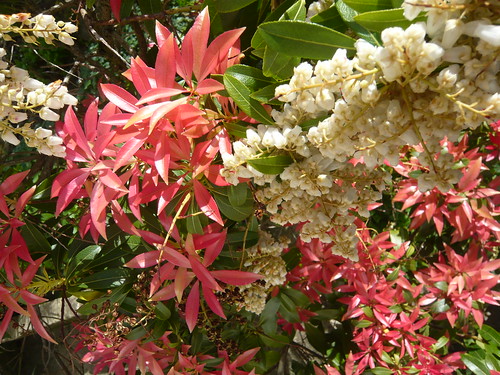
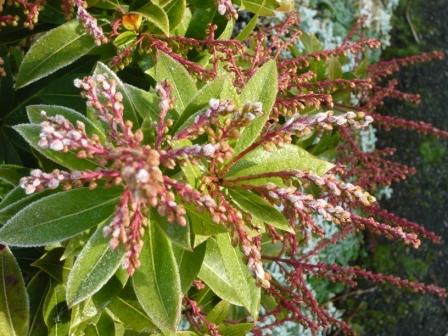
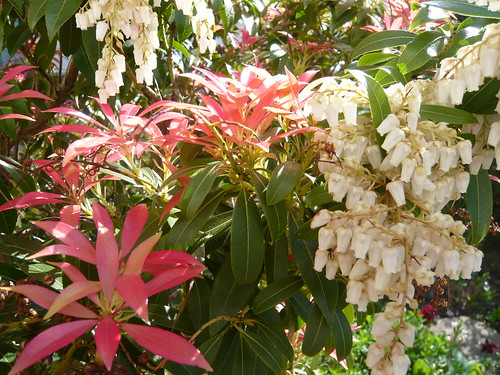
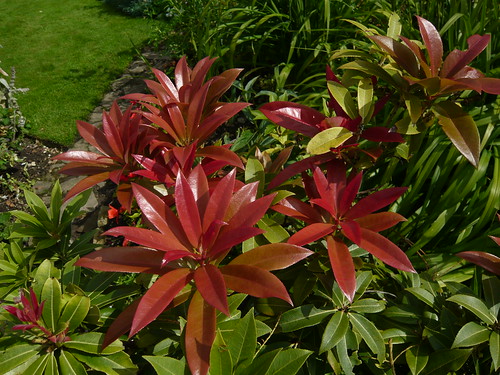
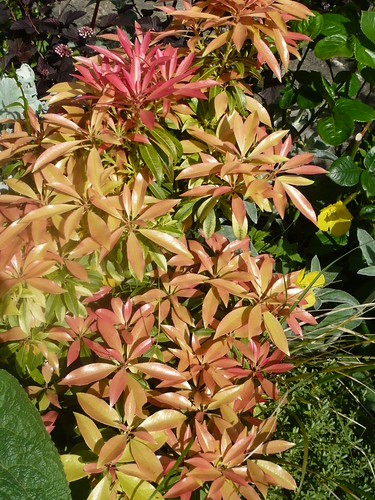
One thought on “Pieris japonica Portraits”
Comments are closed.